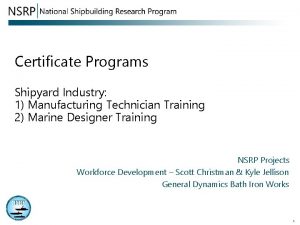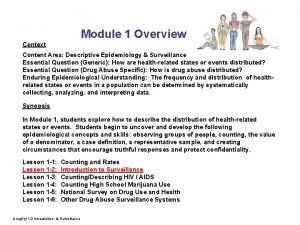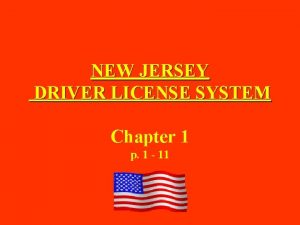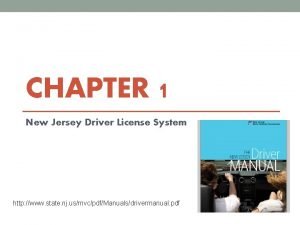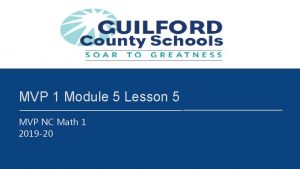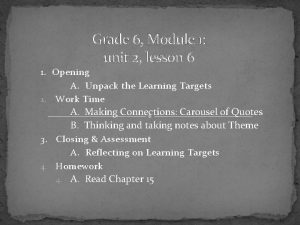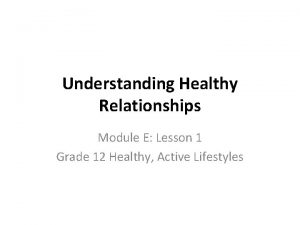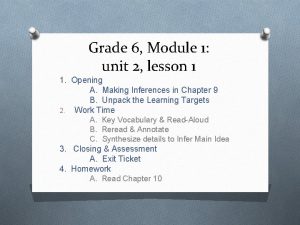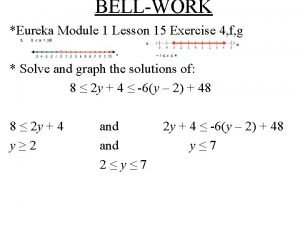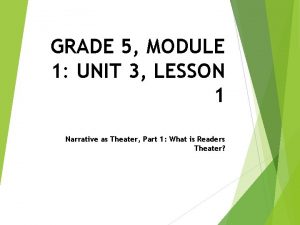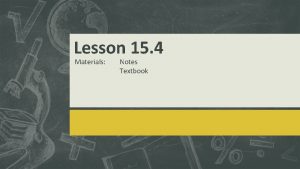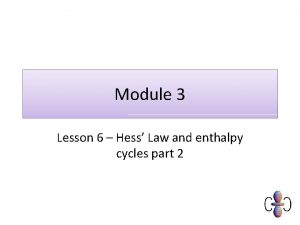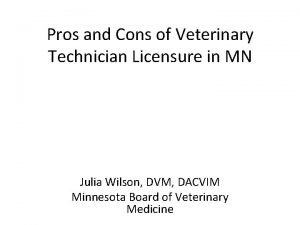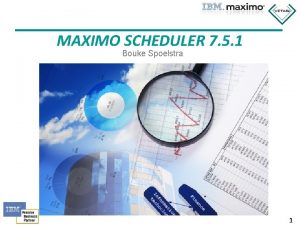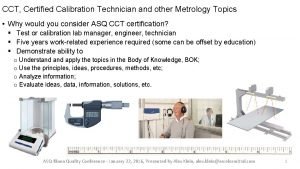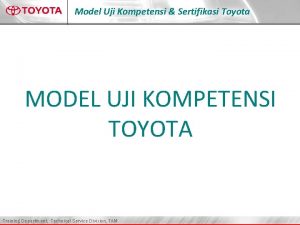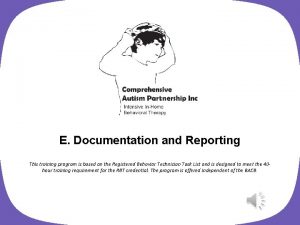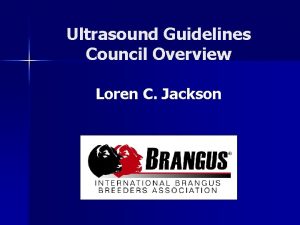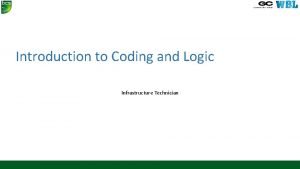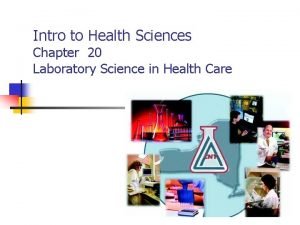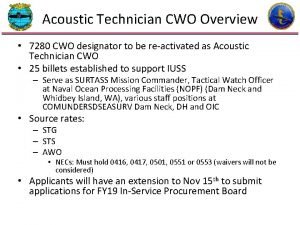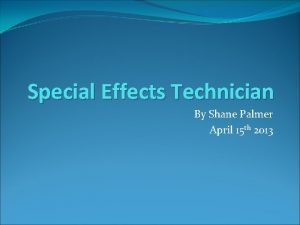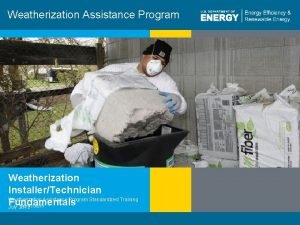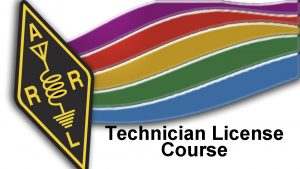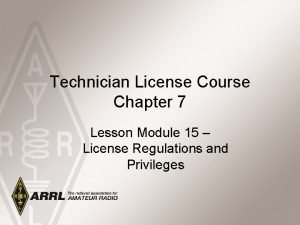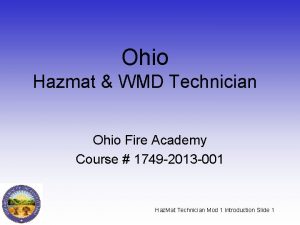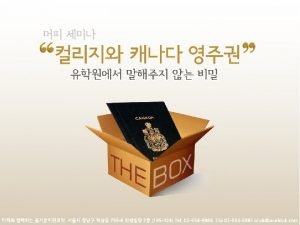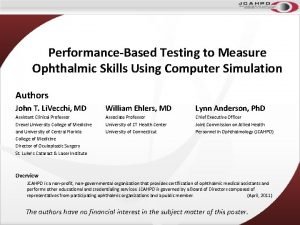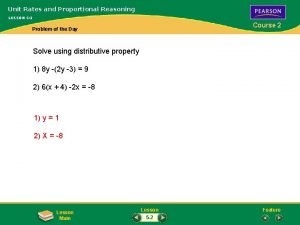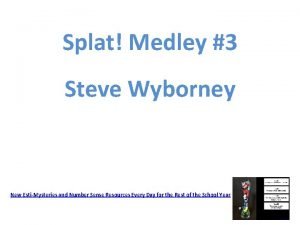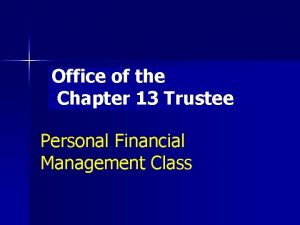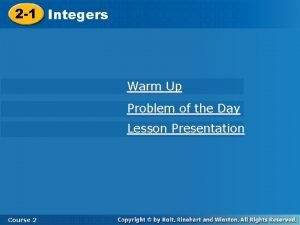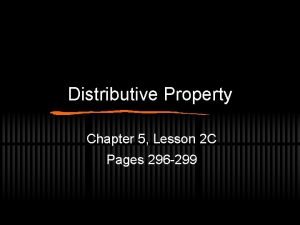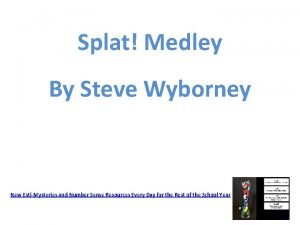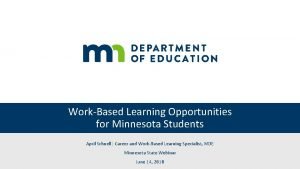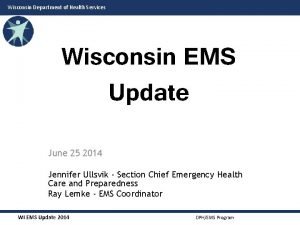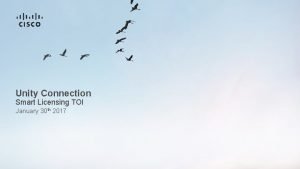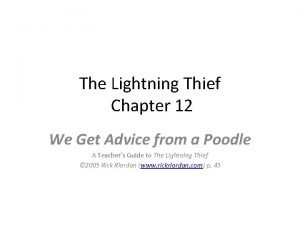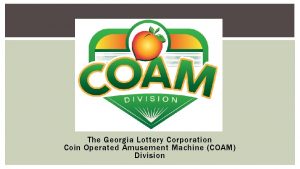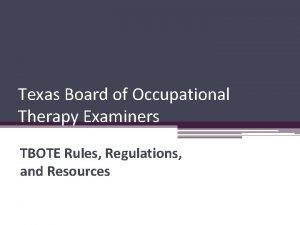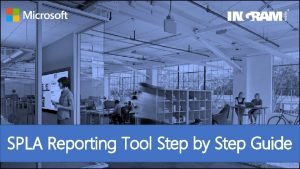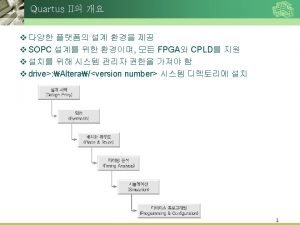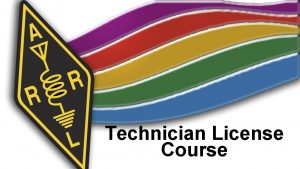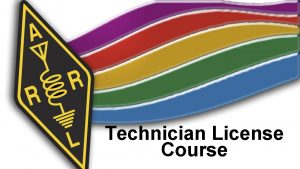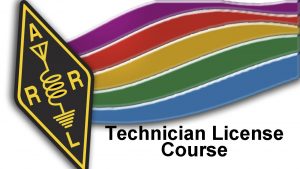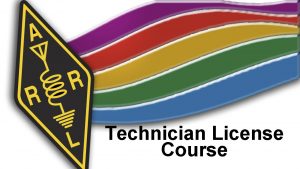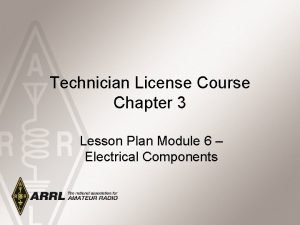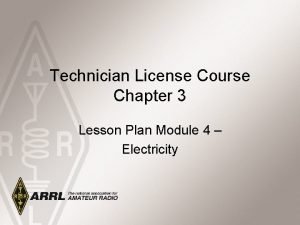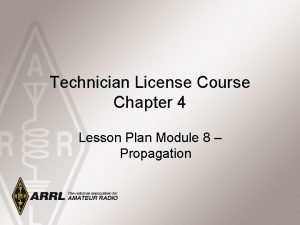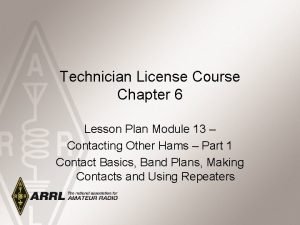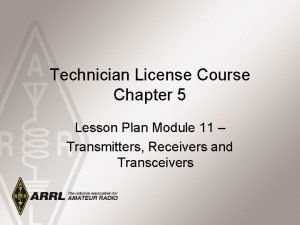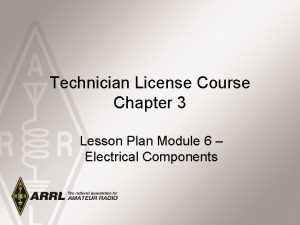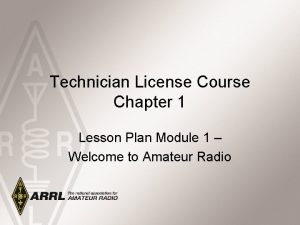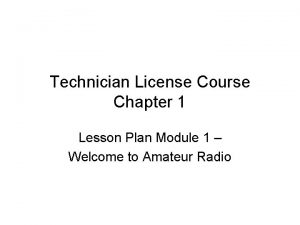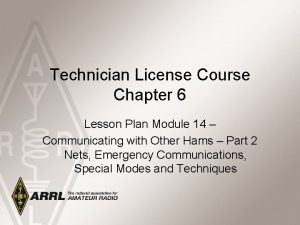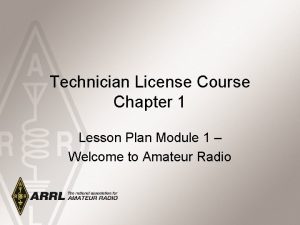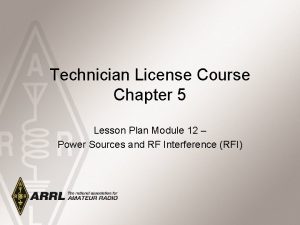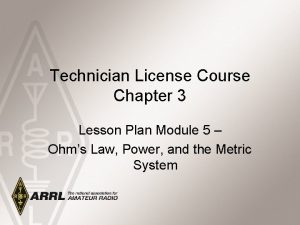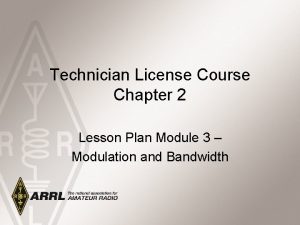Technician License Course Chapter 6 Lesson Plan Module








































































- Slides: 72

Technician License Course Chapter 6 Lesson Plan Module 13 – Contacting Other Hams – Part 1 Contact Basics, Band Plans, Making Contacts and Using Repeaters

The Typical Telephone Conversation • Greeting • Identify who is participating • Exchange information, generally taking turns • Salutations • End the conversation 2014 Technician License Course

The Typical Ham Contact (QSO) • Greeting • Identify who is participating • Exchange information, generally taking turns • Salutations • End the conversation 2014 Technician License Course

Radio Manners • Speak clearly and distinctly • Remember – you can’t see the other person talking! • Use phonetics when needed • Assume all communications are public – choose topics accordingly 2014 Technician License Course

Radio Manners • Before transmitting, be sure the frequency is clear and you are authorized to use it! • Station identification (10 -minute rule) • Frequencies are shared • No one has a prior claim to a frequency • Schedules, nets, pre-planned events • Be flexible, always have a “Plan B” 2014 Technician License Course

Radio Manners • Signal reports • Power level • RST • Avoid excess power • Location (QTH) • Grid locators – Readability (1– 5) – Strength (1– 9) – Tone (CW only 1– 9) – “Your signal is 58” 2014 Technician License Course

Radio Manners • Advice and assistance • Radio and antenna tests or checks • Ham radio is self-regulated • ARRL Official Observers • Logging contacts – on paper or computer • QSLs and award programs 2014 Technician License Course

Band Plans • A band plan is a formal plan for organizing types of operation on a band – Informal agreement – not a regulation – Intended for normal circumstances – Be flexible in times of heavy band use (contests, special events, DXpeditions) – Always have a “Plan B” 2014 Technician License Course

Making Contacts • Repeater operation • Listen to see how the regulars operate • To announce your presence, just say your call • Respond to a call with the station’s call followed by your own call • Often used by a club or group as a regional intercom 2014 Technician License Course

Making Contacts • Repeater signal reports (examples) • Full-quieting: signal is strong enough that no noise is heard • Scratchy: occasional noise with your signal • Flutter: multi-path from a mobile station • In and out: occasionally copyable but mostly inaudible 2014 Technician License Course

Making Contacts • HF on CW or SSB • “CQ” means “I am calling anyone” • To answer give the station’s call followed by your call once or twice • Use of phonetics is common 2014 Technician License Course

Making Contacts • Taking turns • Nets • Roundtables • Shared contacts • Breaking in • Wait for a pause • Give your call 2014 Technician License Course

Making Contacts • Simplex FM • Each user takes turns to transmit • Works for stations close to each other • If you can hear the other station on the repeater input frequency, try simplex • 2 meters: 146. 52 MHz • 70 cm: 446. 00 MHz 2014 Technician License Course

Repeater Review • Specialized transmitter/receiver interconnected by a controller. • Generally located at a high place. • Receives and simultaneously retransmits your signal on a different frequency. • Dramatically extends line-of-sight range. 2014 Technician License Course

Repeater Review – How They Work 2014 Technician License Course

Duplex Communication • Transmitting on one frequency while simultaneously listening on a different frequency. • Repeaters use duplex communications. • Output frequency – the frequency the repeater transmits on and you listen to. • Input frequency – the frequency the repeater listens to and you transmit on. 2014 Technician License Course

Things to Know to Use a Repeater • Output frequency • Frequency offset – And therefore the input frequency • Repeater access tones (if any) 2014 Technician License Course

Repeater Output Frequency • Repeaters are frequently identified by their output frequency. – “Meet you on the 443. 50 machine. ” • Here the specific frequency is used. – “Let’s go to 94. ” • Here an abbreviation for a standard repeater channel is used, meaning 146. 94 MHz. – “How about the NARL repeater? ” • Here the repeater is referenced by the sponsoring club name. 2014 Technician License Course

Repeater Frequency Offset • The offset frequencies (shifts or splits) are standardized to help facilitate repeater use. • There are + and – offsets depending on the plan. • Different bands have different standardized amounts of offset. 2014 Technician License Course

Repeater Access Tones • Prevents accessing multiple repeaters at once. • Subaudible low-frequency tone must be present before the repeater transmitter will turn on. • Tones have various names (depending on equipment manufacturer). – CTCSS (continuous tone coded squelch system) – PL (a Motorola trade name for CTCSS) – Privacy codes or tones – DCS (digital coded squelch) 2014 Technician License Course

Repeater Access Tones • Access tones are usually published along with repeater frequencies. • Could also be announced when the repeater identifies. – “PL is 123. 0” meaning 123. 0 Hz • Tones are generally programmed into the radio along with frequency and offset. 2014 Technician License Course

Repeater Control • Repeater identification (Morse code or synthesized voice) • Same ID requirements as you have • Time-out protection • Protects against continuous transmission in the event of a stuck PTT or long-winded speaker • Usually three minutes • Courtesy beep or tone signals time-out timer reset • May have an autopatch system for phone calls 2014 Technician License Course

Common Problems • Off frequency: causes audio distortion • Low batteries: weak signal, audio distortion • Poor location: hear repeater OK, can’t make or maintain contact • Access tone off or wrong: repeater is strong but can’t access it • Repeater drops in and out of your receiver: squelch setting too high 2014 Technician License Course

Digital Repeater Systems • Repeaters linked by the Internet • Use digital audio – Voice Over Internet Protocol (VOIP) • • • Similar to Skype Allows communication world-wide Internet Linking Relay Project (IRLP) Echolink Access codes on system websites 2014 Technician License Course

D-STAR • Both a repeater linking system and a digital voice protocol • DV: Digital Voice mode (voice + 1200 baud data) • DD: Digital Data mode (128 kbps data) • Repeaters linked together worldwide • Call user-to-user based on call sign • Currently an ICOM system • Yaesu and Kenwood also building digital systems 2014 Technician License Course

Practice Questions 2014 Technician License Course

What is the most common repeater frequency offset in the 2 meter band? A. Plus 500 k. Hz B. Plus or minus 600 k. Hz C. Minus 500 k. Hz D. Only plus 600 k. Hz T 2 A 01 HRLM (6 -16) 2014 Technician License Course

What is the most common repeater frequency offset in the 2 meter band? A. Plus 500 k. Hz B. Plus or minus 600 k. Hz C. Minus 500 k. Hz D. Only plus 600 k. Hz T 2 A 01 HRLM (6 -16) 2014 Technician License Course

What is the national calling frequency for FM simplex operations in the 70 cm band? A. 146. 520 MHz B. 145. 000 MHz C. 432. 100 MHz D. 446. 000 MHz T 2 A 02 HRLM (6 -14) 2014 Technician License Course

What is the national calling frequency for FM simplex operations in the 70 cm band? A. 146. 520 MHz B. 145. 000 MHz C. 432. 100 MHz D. 446. 000 MHz T 2 A 02 HRLM (6 -14) 2014 Technician License Course

What is a common repeater frequency offset in the 70 cm band? A. Plus or minus 5 MHz B. Plus or minus 600 k. Hz C. Minus 600 k. Hz D. Plus 600 k. Hz T 2 A 03 HRLM (6 -16) 2014 Technician License Course

What is a common repeater frequency offset in the 70 cm band? A. Plus or minus 5 MHz B. Plus or minus 600 k. Hz C. Minus 600 k. Hz D. Plus 600 k. Hz T 2 A 03 HRLM (6 -16) 2014 Technician License Course

What is an appropriate way to call another station on a repeater if you know the other station's call sign? A. Say "break, break" then say the station's call sign B. Say the station's call sign then identify with your call sign C. Say "CQ" three times then the other station's call sign D. Wait for the station to call "CQ" then answer it T 2 A 04 HRLM (6 -12) 2014 Technician License Course

What is an appropriate way to call another station on a repeater if you know the other station's call sign? A. Say "break, break" then say the station's call sign B. Say the station's call sign then identify with your call sign C. Say "CQ" three times then the other station's call sign D. Wait for the station to call "CQ" then answer it T 2 A 04 HRLM (6 -12) 2014 Technician License Course

How should you respond to a station calling CQ? A. Transmit CQ followed by the other station’s call sign B. Transmit our call sign followed by the other station’s call sign C. Transmit the other station’s call sign followed by your call sign D. Transmit a signal report followed by your call sign T 2 A 05 HRLM (6 -13) 2014 Technician License Course

How should you respond to a station calling CQ? A. Transmit CQ followed by the other station’s call sign B. Transmit our call sign followed by the other station’s call sign C. Transmit the other station’s call sign followed by your call sign D. Transmit a signal report followed by your call sign T 2 A 05 HRLM (6 -13) 2014 Technician License Course

What is the meaning of the procedural signal "CQ"? A. Call on the quarter hour B. A new antenna is being tested (no station should answer) C. Only the called station should transmit D. Calling any station T 2 A 08 HRLM (6 -13) 2014 Technician License Course

What is the meaning of the procedural signal "CQ"? A. Call on the quarter hour B. A new antenna is being tested (no station should answer) C. Only the called station should transmit D. Calling any station T 2 A 08 HRLM (6 -13) 2014 Technician License Course

What brief statement is often used in place of "CQ" to indicate that you are listening on a repeater? A. The words "Hello test" followed by your call sign B. Your call sign C. The repeater call sign followed by your call sign D. The letters "QSY" followed by your call sign T 2 A 09 HRLM (6 -9) 2014 Technician License Course

What brief statement is often used in place of "CQ" to indicate that you are listening on a repeater? A. The words "Hello test" followed by your call sign B. Your call sign C. The repeater call sign followed by your call sign D. The letters "QSY" followed by your call sign T 2 A 09 HRLM (6 -9) 2014 Technician License Course

Which of the following is a guideline to use when choosing an operating frequency for calling CQ? A. Listen first to be sure that no one else is using the frequency B. Ask if the frequency is in use C. Make sure you are in your assigned band D. All of these choices are correct T 2 A 12 HRLM (6 -13) 2014 Technician License Course

Which of the following is a guideline to use when choosing an operating frequency for calling CQ? A. Listen first to be sure that no one else is using the frequency B. Ask if the frequency is in use C. Make sure you are in your assigned band D. All of these choices are correct T 2 A 12 HRLM (6 -13) 2014 Technician License Course

What is the term used to describe an amateur station that is transmitting and receiving on the same frequency? A. Full duplex communication B. Diplex communication C. Simplex communication D. Multiplex T 2 B 01 HRLM (6 -9) 2014 Technician License Course

What is the term used to describe an amateur station that is transmitting and receiving on the same frequency? A. Full duplex communication B. Diplex communication C. Simplex communication D. Multiplex T 2 B 01 HRLM (6 -9) 2014 Technician License Course

What is the term used to describe the use of a sub-audible tone transmitted with normal voice audio to open the squelch of a receiver? A. Carrier squelch B. Tone burst C. DTMF D. CTCSS T 2 B 02 HRLM (6 -16) 2014 Technician License Course

What is the term used to describe the use of a sub-audible tone transmitted with normal voice audio to open the squelch of a receiver? A. Carrier squelch B. Tone burst C. DTMF D. CTCSS T 2 B 02 HRLM (6 -16) 2014 Technician License Course

Which of the following common problems might cause you to be able to hear but not access a repeater even when transmitting with the proper offset? A. The repeater receiver may require an audio tone burst for access B. The repeater receiver may require a CTCSS tone for access C. The repeater receiver may require a DCS tone sequence for access D. All of these choices are correct T 2 B 04 HRLM (6 -17) 2014 Technician License Course

Which of the following common problems might cause you to be able to hear but not access a repeater even when transmitting with the proper offset? A. The repeater receiver may require an audio tone burst for access B. The repeater receiver may require a CTCSS tone for access C. The repeater receiver may require a DCS tone sequence for access D. All of these choices are correct T 2 B 04 HRLM (6 -17) 2014 Technician License Course

Which "Q" signal indicates that you are receiving interference from other stations? A. QRM B. QRN C. QTH D. QSB T 2 B 10 HRLM (6 -5) 2014 Technician License Course

Which "Q" signal indicates that you are receiving interference from other stations? A. QRM B. QRN C. QTH D. QSB T 2 B 10 HRLM (6 -5) 2014 Technician License Course

Which "Q" signal indicates that you are changing frequency? A. QRU B. QSY C. QSL D. QRZ T 2 B 11 HRLM (6 -5) 2014 Technician License Course

Which "Q" signal indicates that you are changing frequency? A. QRU B. QSY C. QSL D. QRZ T 2 B 11 HRLM (6 -5) 2014 Technician License Course

Under what circumstances should you consider communicating via simplex rather than a repeater? A. When the stations can communicate directly without using a repeater B. Only when you have an endorsement for simplex operation on your license C. Only when third party traffic is not being passed D. Only if you have simplex modulation capability T 2 B 12 HRLM (6 -14) 2014 Technician License Course

Under what circumstances should you consider communicating via simplex rather than a repeater? A. When the stations can communicate directly without using a repeater B. Only when you have an endorsement for simplex operation on your license C. Only when third party traffic is not being passed D. Only if you have simplex modulation capability T 2 B 12 HRLM (6 -14) 2014 Technician License Course

What should be done to insure that voice message traffic containing proper names and unusual words are copied correctly by the receiving station? A. The entire message should be repeated at least four times B. Such messages must be limited to no more than 10 words C. Such words and terms should be spelled out using a standard phonetic alphabet D. All of these choices are correct T 2 C 03 HRLM (6 -22) 2014 Technician License Course

What should be done to insure that voice message traffic containing proper names and unusual words are copied correctly by the receiving station? A. The entire message should be repeated at least four times B. Such messages must be limited to no more than 10 words C. Such words and terms should be spelled out using a standard phonetic alphabet D. All of these choices are correct T 2 C 03 HRLM (6 -22) 2014 Technician License Course

Which of the following describes the common meaning of the term “repeater offset”? A. The distance between the repeater’s transmit and receive antennas B. The time delay before the repeater timer resets C. The difference between the repeater’s transmit and receive frequencies D. Matching the antenna impedance to the feed line impedance T 4 B 11 HRLM (6 -16) 2014 Technician License Course

Which of the following describes the common meaning of the term “repeater offset”? A. The distance between the repeater’s transmit and receive antennas B. The time delay before the repeater timer resets C. The difference between the repeater’s transmit and receive frequencies D. Matching the antenna impedance to the feed line impedance T 4 B 11 HRLM (6 -16) 2014 Technician License Course

What might be the problem if you receive a report that your audio signal through the repeater is distorted or unintelligible? A. Your transmitter may be slightly off frequency B. Your batteries may be running low C. You could be in a bad location D. All of these choices are correct T 7 B 10 HRLM (6 -12) 2014 Technician License Course

What might be the problem if you receive a report that your audio signal through the repeater is distorted or unintelligible? A. Your transmitter may be slightly off frequency B. Your batteries may be running low C. You could be in a bad location D. All of these choices are correct T 7 B 10 HRLM (6 -12) 2014 Technician License Course

What is a grid locator? A. A letter-number designator assigned to a geographic location B. A letter-number designator assigned to an azimuth and elevation C. An instrument for neutralizing a final amplifier D. An instrument for radio direction finding T 8 C 05 HRLM (6 -4) 2014 Technician License Course

What is a grid locator? A. A letter-number designator assigned to a geographic location B. A letter-number designator assigned to an azimuth and elevation C. An instrument for neutralizing a final amplifier D. An instrument for radio direction finding T 8 C 05 HRLM (6 -4) 2014 Technician License Course

How is access to an IRLP node accomplished? A. By obtaining a password which is sent via voice to the node B. By using DTMF signals C. By entering the proper Internet password D. By using CTCSS tone codes T 8 C 06 HRLM (6 -19) 2014 Technician License Course

How is access to an IRLP node accomplished? A. By obtaining a password which is sent via voice to the node B. By using DTMF signals C. By entering the proper Internet password D. By using CTCSS tone codes T 8 C 06 HRLM (6 -19) 2014 Technician License Course

How might you obtain a list of active nodes that use Vo. IP? A. From the FCC Rulebook B. From your local emergency coordinator C. From a repeater directory D. From the local repeater frequency coordinator T 8 C 09 HRLM (6 -19) 2014 Technician License Course

How might you obtain a list of active nodes that use Vo. IP? A. From the FCC Rulebook B. From your local emergency coordinator C. From a repeater directory D. From the local repeater frequency coordinator T 8 C 09 HRLM (6 -19) 2014 Technician License Course

How do you select a specific IRLP node when using a portable transceiver? A. Choose a specific CTCSS tone B. Choose the correct DSC tone C. Access the repeater autopatch D. Use the keypad to transmit the IRLP node ID T 8 C 10 HRLM (6 -19) 2014 Technician License Course

How do you select a specific IRLP node when using a portable transceiver? A. Choose a specific CTCSS tone B. Choose the correct DSC tone C. Access the repeater autopatch D. Use the keypad to transmit the IRLP node ID T 8 C 10 HRLM (6 -19) 2014 Technician License Course

What is meant by Voice Over Internet Protocol (Vo. IP) as used in amateur radio? A. A set of rules specifying how to identify your station when linked over the Internet to another station B. A set of guidelines for working DX during contests using Internet access C. A technique for measuring the modulation quality of a transmitter using remote sites monitored via the Internet D. A method of delivering voice communications over the Internet using digital techniques T 8 C 12 HRLM (6 -19) 2014 Technician License Course

What is meant by Voice Over Internet Protocol (Vo. IP) as used in amateur radio? A. A set of rules specifying how to identify your station when linked over the Internet to another station B. A set of guidelines for working DX during contests using Internet access C. A technique for measuring the modulation quality of a transmitter using remote sites monitored via the Internet D. A method of delivering voice communications over the Internet using digital techniques T 8 C 12 HRLM (6 -19) 2014 Technician License Course

What is the Internet Radio Linking Project (IRLP)? A. A technique to connect amateur radio systems, such as repeaters, via the Internet using a Voice Over Internet Protocol B. A system for providing access to websites via amateur radio C. A system for informing amateurs real time of the frequency of active DX stations D. A technique for measuring signal strength of an amateur transmitter via the Internet T 8 C 13 HRLM (6 -18) 2014 Technician License Course

What is the Internet Radio Linking Project (IRLP)? A. A technique to connect amateur radio systems, such as repeaters, via the Internet using a Voice Over Internet Protocol B. A system for providing access to websites via amateur radio C. A system for informing amateurs real time of the frequency of active DX stations D. A technique for measuring signal strength of an amateur transmitter via the Internet T 8 C 13 HRLM (6 -18) 2014 Technician License Course
 Manufacturing technician license
Manufacturing technician license Manufacturing tech license
Manufacturing tech license Format of micro lesson plan
Format of micro lesson plan C device module module 1
C device module module 1 Safety leadership for supervisors
Safety leadership for supervisors Course module sample
Course module sample Pati explain to tapi that the beggar
Pati explain to tapi that the beggar Stretcher bond t junction
Stretcher bond t junction Course number and title
Course number and title Chaine parallèle muscle
Chaine parallèle muscle Altering a license may result in
Altering a license may result in Chapter 1 nj driver license system
Chapter 1 nj driver license system Chapter 1 the new jersey driver license system answers
Chapter 1 the new jersey driver license system answers Lesson 1 your total health
Lesson 1 your total health Chapter 7 lesson 3 a new plan of government
Chapter 7 lesson 3 a new plan of government Module 9 lesson 2
Module 9 lesson 2 Module 5 lesson 5
Module 5 lesson 5 Unit 2 lesson 6
Unit 2 lesson 6 Practical/logistical issues in relationships
Practical/logistical issues in relationships Grade 6 module
Grade 6 module Module eleven lesson one self check quiz
Module eleven lesson one self check quiz Eureka math algebra 1 module 1 lesson 15
Eureka math algebra 1 module 1 lesson 15 Grade 5 module 1 lesson 1
Grade 5 module 1 lesson 1 Intersecting chords
Intersecting chords Enthalpy of formation hess law
Enthalpy of formation hess law What is coring in pharmacy
What is coring in pharmacy How long must a technician evacuating refrigerant
How long must a technician evacuating refrigerant Vet tech pros and cons
Vet tech pros and cons Ibm maximo scheduler
Ibm maximo scheduler Asq cct
Asq cct 5 healthcare career pathways
5 healthcare career pathways Radar and sonar technician career cluster
Radar and sonar technician career cluster Technician a says that the bulb trade number
Technician a says that the bulb trade number Toyota technician certification
Toyota technician certification Mobile technician app
Mobile technician app Mtm pharmacy technician
Mtm pharmacy technician Scheduler plus
Scheduler plus Rbt documentation and reporting
Rbt documentation and reporting Surface repair technician training
Surface repair technician training Safety health and environment apprenticeship
Safety health and environment apprenticeship Translator
Translator Live technician
Live technician Ultrasound guidelines council
Ultrasound guidelines council Bcs infrastructure technician
Bcs infrastructure technician A csi lab technician _____.
A csi lab technician _____. Horticultural technician apprentice
Horticultural technician apprentice Acoustic technician
Acoustic technician How to become a special effects technician
How to become a special effects technician How to become a weatherization technician
How to become a weatherization technician Level 9 technician
Level 9 technician Technician class privileges
Technician class privileges Tracemp
Tracemp Pci wind turbine technician
Pci wind turbine technician Pharmacy technician george brown
Pharmacy technician george brown Cot skills simulator
Cot skills simulator Commonly damaged areas of a vehicle during hoisting
Commonly damaged areas of a vehicle during hoisting Ecc x ray technician
Ecc x ray technician Dental technician association of bc
Dental technician association of bc Course plan ppt
Course plan ppt Course 2 chapter 1 ratios and proportional reasoning
Course 2 chapter 1 ratios and proportional reasoning Steve wyborney multiplication
Steve wyborney multiplication Chapter 13 personal financial management course
Chapter 13 personal financial management course Course 2 chapter 3 integers
Course 2 chapter 3 integers Course 2 chapter 5 expressions
Course 2 chapter 5 expressions Stevewyborney.com splat
Stevewyborney.com splat Work based learning license mn
Work based learning license mn Wisconsin ems license
Wisconsin ems license Cssm cisco
Cssm cisco Percy jackson and the lightning thief chapter 12
Percy jackson and the lightning thief chapter 12 Coin operated amusement machines georgia
Coin operated amusement machines georgia Texas state board of occupational therapy
Texas state board of occupational therapy Spla reporting
Spla reporting Quartus ii web edition download
Quartus ii web edition download
